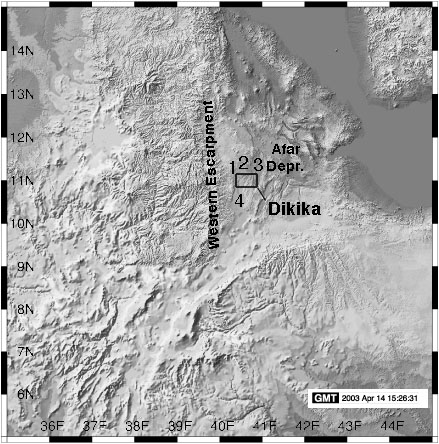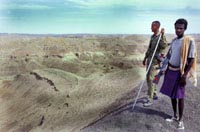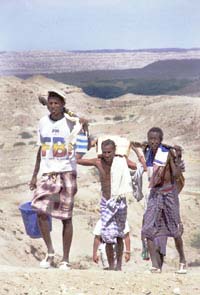dikika research project
USF Geology
Dikika Research Project
Geological Context of Human Evolution, Dikika, Ethiopia
Jonathan G. Wynn, Diana Roman, Zeresenay Alemseged

Many sites in the Afar of Ethiopia have become world famous for yielding hominin fossils that hold critical information for our understanding of the emergence, diversity and evolution of our own family over the last ca. 6 million years. Three major stages of human evolution, i.e. the appearance of the first hominins after the split with the great apes ( ca. 6 Ma); the emergence of the genus Homo ( ca. 2.5 Ma) and the advent of our own species, Homo sapiens ( ca. 200,000 ka) are represented in the Ethiopian Rift Valley. In addition to hominin discoveries, a wealth of non-human fossil material has been amassed from the area. All this has made the Ethiopian Rift a paleoanthropological and paleontological paradise for scientists from all over the world. Faunal, sedimentological, palynological and geochemical evidence from this research project suggest that areas where hominin fossils are encountered today had very different (but changing) environment over the past 4 million years. Environments in general are interpreted to have changed from woodlands and forests to more open environments such as grasslands, although the temporal and geographic details of regional paleoenvironmental change is a subject of much current research and discussion. Our understanding of these patterns across broad regions of Ethiopia is critical for the comprehension of their role in human evolution.
 Field assistants, Fanuse and Hassan above a series of fluvial and lacustrine sediments of the lower Hadar Formation at Dikika, Ethiopia.
Field assistants, Fanuse and Hassan above a series of fluvial and lacustrine sediments of the lower Hadar Formation at Dikika, Ethiopia.
 Issa field crew returning from excavation at the DIK-1 hominin site.
Issa field crew returning from excavation at the DIK-1 hominin site.
Contact Information
SCA 509
Geology Department
University of South Florida
4202 E Fowler Ave
Tampa, FL 33617
USA
+1 (813) 974-9369
+1 (813) 974-93xx (lab)
+1 (813) 974-2654 (fax)
e-mail:
jwynn (...)
cas.usf.edu
Courses
- GLY 6739. Stable Isotope Geochemistry
- GLY 4xxx. Soil Science
- GLY 6xxx. Global Biogeochemistry

